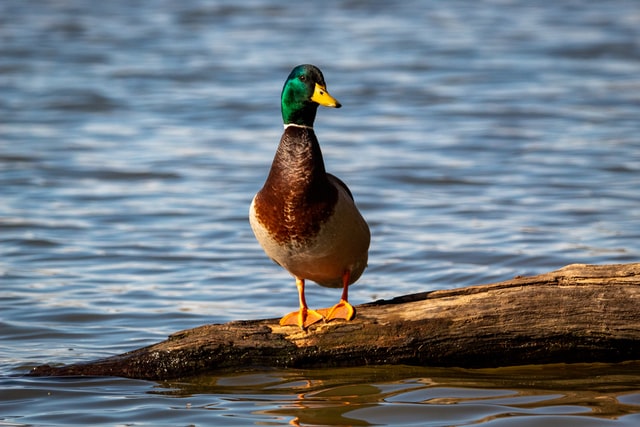Nature Note – February 2022
Learning Bird Songs
I make no apologies for reminding readers that mid-February, around Valentine’s Day, is when many of our resident birds begin to establish breeding territories. There have been snatches of song in the recent mild spell, but mid-February to mid-June is the best time of the year to learn more bird songs.
Some people say they don’t know any bird songs even though they can identify birds that they see. I always reply that most people know some songs and calls. Start with what you know and increase your repertoire a bird at a time.

- Mallard. Ducks quack. Species of duck other than mallard make a wide range of different noises. However, if you hear a duck quacking it will either be a mallard or a farmyard duck with mallard somewhere in its family tree.
- Crows “caw”. Helpfully, crows are identified by “cawing” three or four times in quick succession.
- Jackdaws “chak”. Often in noisy groups and frequently around houses and gardens.
- Buzzards “mew”. If you think you have just heard a high-flying cat, look up and try to find a circling buzzard. If you already know what a buzzard sounds like, try to find and identify a calling red kite.
- Collared doves are often in gardens. Their call is two long “coos”, a gap and then a short “coo”: cooo, cooo – coo.
- Great tits are common birds. Their song is the easiest to learn of the tit family, a strident: “tee-cher, tee-cher”.
- Skylark . Stand by a large arable field on a sunny day and listen for a steady out-pouring of melodic song from a dark looking dot in the sky. Poets and composers seem to have featured skylark in their compositions more than any other bird.
- Chiffchaffs are, mainly, summer migrants. Theirs is the easiest song to learn of all our migrant warblers: “chiff-chaff, chiff-chaff”.
- Song thrushes seem to disappear in the non-breeding season as they can be quite secretive. In song they are unmistakable once you listen hard enough. They can sit and sing for long periods and they sing many different phrases, but to make our lives easier they repeat each phrase at least twice before trying out a new one. They also compete aggressively, so if you can hear one song thrush you might find that it has stimulated one or more others into song.
- Blackbird. Wherever you live there will almost certainly be a male blackbird within earshot this spring. They are best heard early in the morning and late in the evening. The latter is the best time to hear them as there is usually less traffic noise, and many other species have long since gone to roost. The song is very varied. Many people make a case for it being one of the most beautiful songs that can be heard in the UK.
Look back through this top ten. Place ticks against any of the songs and calls you feel certain that you know. Aim to have ticks against all ten by the end of March, then add more species throughout the rest of spring and early summer.
For some easy additions you might try to add robin, wren, woodpigeon and green and great spotted woodpeckers. Finally, if they breed in your area, how about swifts “screaming” on a warm summer evening?
David Scott




 Disabled Parking and Traffic Congestion
Disabled Parking and Traffic Congestion

